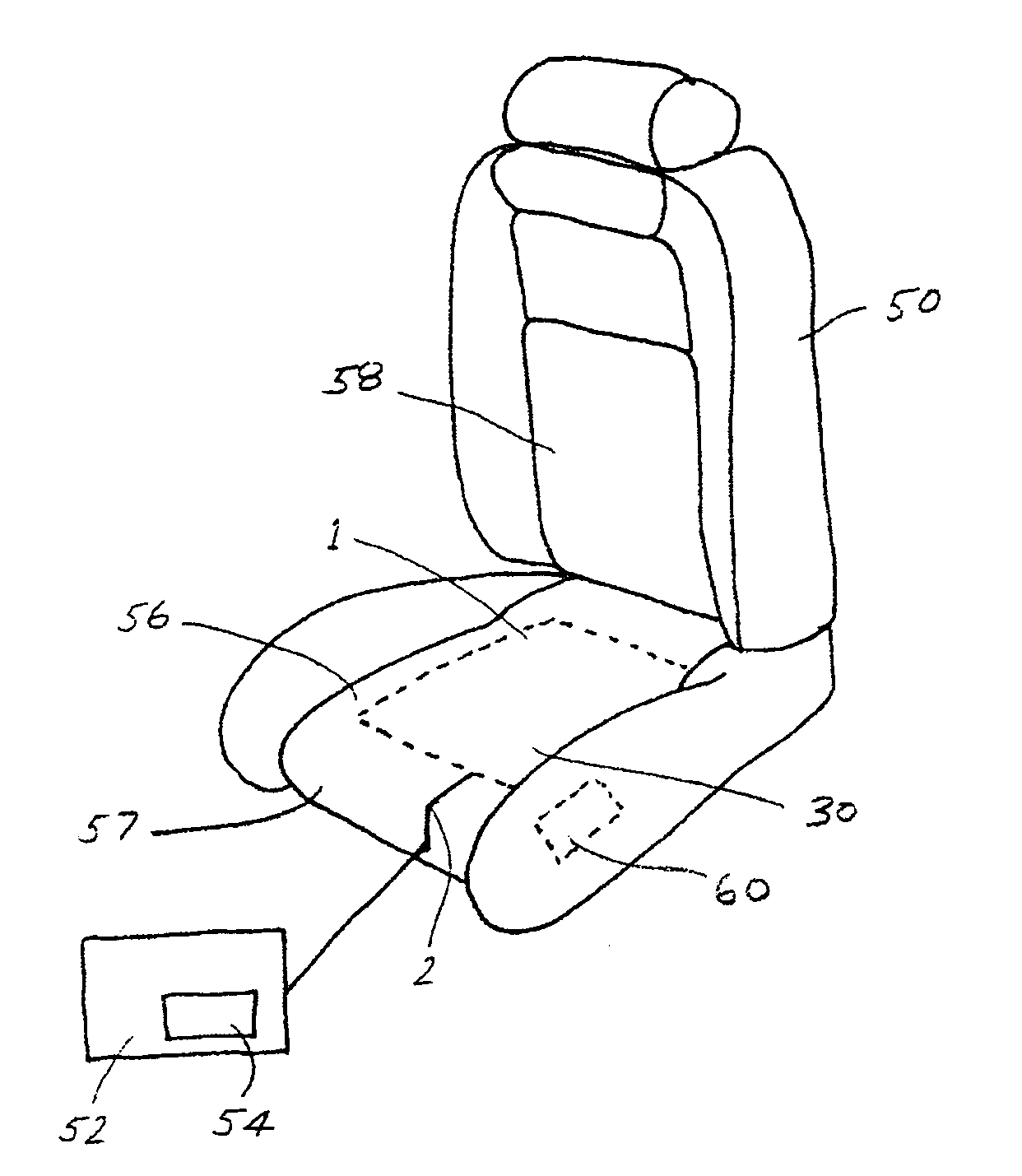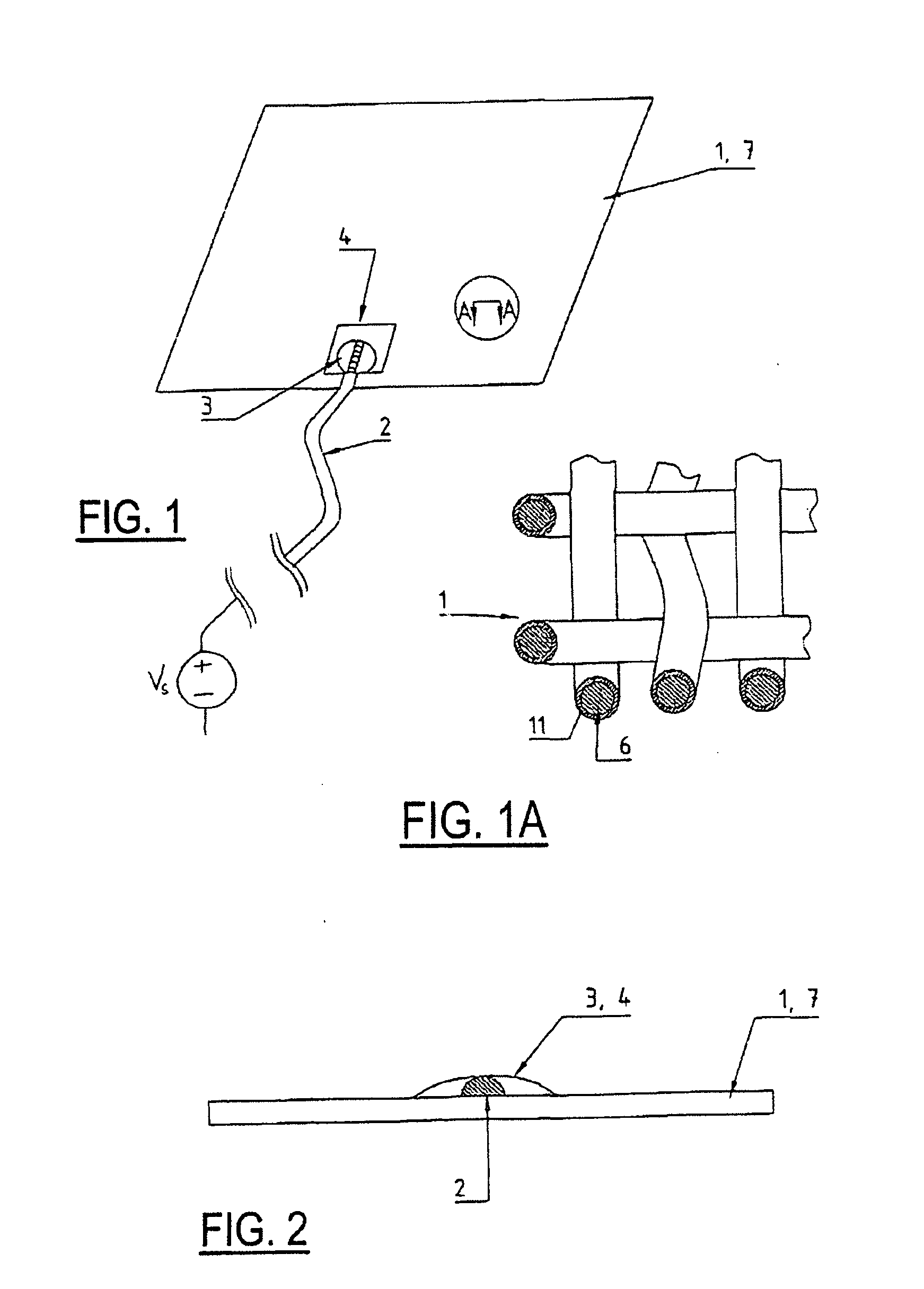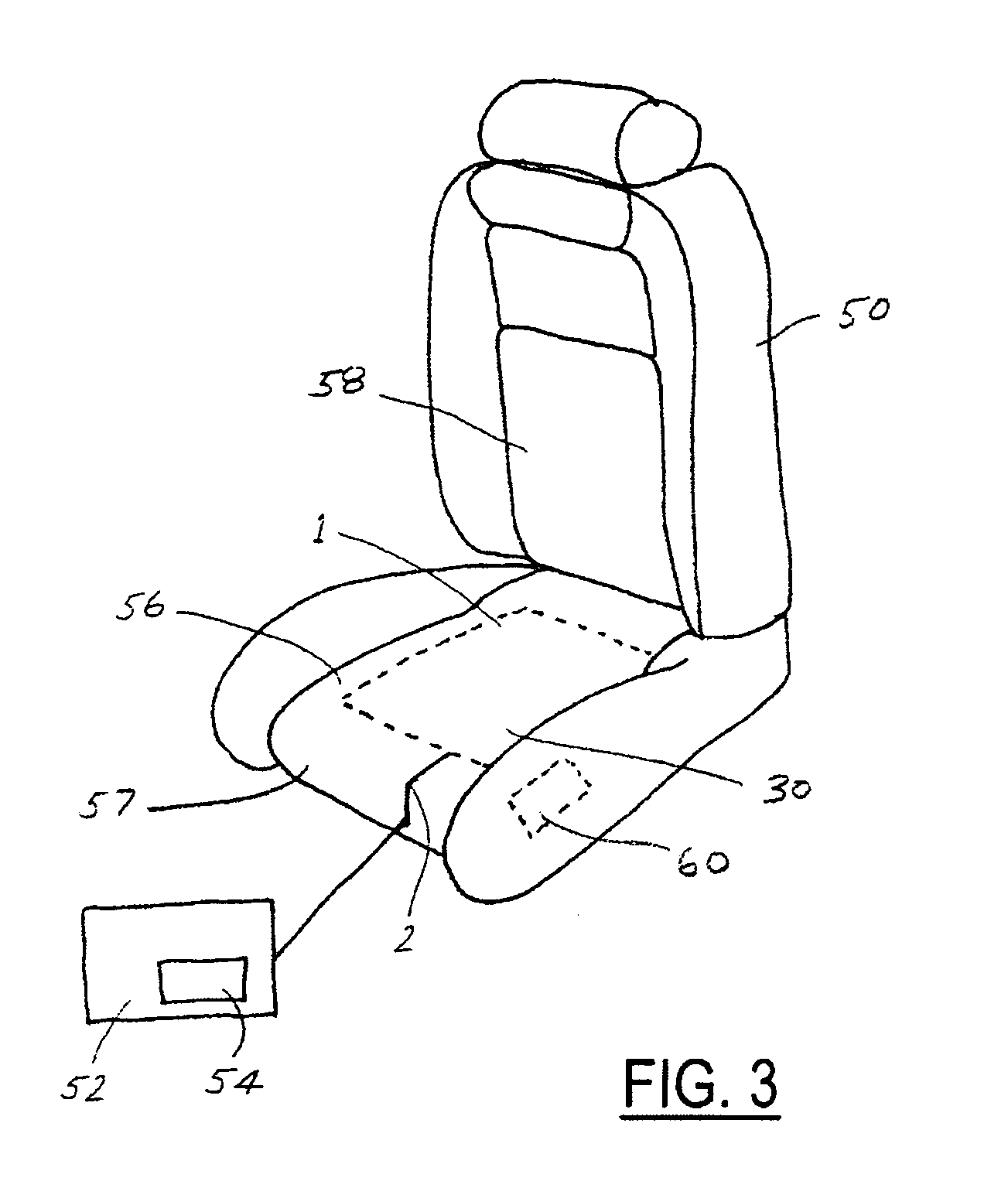Electrically conductive textile
a technology of electrically conductive textiles and textiles, applied in the direction of conductive pattern formation, conductive chairs, transportation and packaging, etc., can solve the problems of reducing the robustness or durability of the conductive textile application, reducing the contact point, and substantially limiting the material selection of the strands, so as to achieve stable solder connection and increase the robustness of the connection
- Summary
- Abstract
- Description
- Claims
- Application Information
AI Technical Summary
Benefits of technology
Problems solved by technology
Method used
Image
Examples
Embodiment Construction
[0021] In the following figures, the same reference numerals are used to refer to the same components. While the present invention is described as an electrically conductively coated surface structure which can be used as part of a heating element for use within a vehicle seating system, it may be adapted and applied to various systems including steering wheel systems or other vehicle or non-vehicle systems requiring a heated surface. It an also be used in any conductive textile application including vehicle seat occupancy detection sensors. In this regard, in the following description, various operating parameters and components are described for several constructed embodiments. These specific parameters and components are included as examples only and are not meant to be limiting.
[0022]FIGS. 1, 1A and 2 show an electrically conductively coated surface structure. In the present case it is a metallized fabric. For example, the fabric comprises non-conductive synthetic strands which...
PUM
| Property | Measurement | Unit |
|---|---|---|
| thickness | aaaaa | aaaaa |
| thickness | aaaaa | aaaaa |
| thickness | aaaaa | aaaaa |
Abstract
Description
Claims
Application Information
 Login to View More
Login to View More - R&D
- Intellectual Property
- Life Sciences
- Materials
- Tech Scout
- Unparalleled Data Quality
- Higher Quality Content
- 60% Fewer Hallucinations
Browse by: Latest US Patents, China's latest patents, Technical Efficacy Thesaurus, Application Domain, Technology Topic, Popular Technical Reports.
© 2025 PatSnap. All rights reserved.Legal|Privacy policy|Modern Slavery Act Transparency Statement|Sitemap|About US| Contact US: help@patsnap.com



